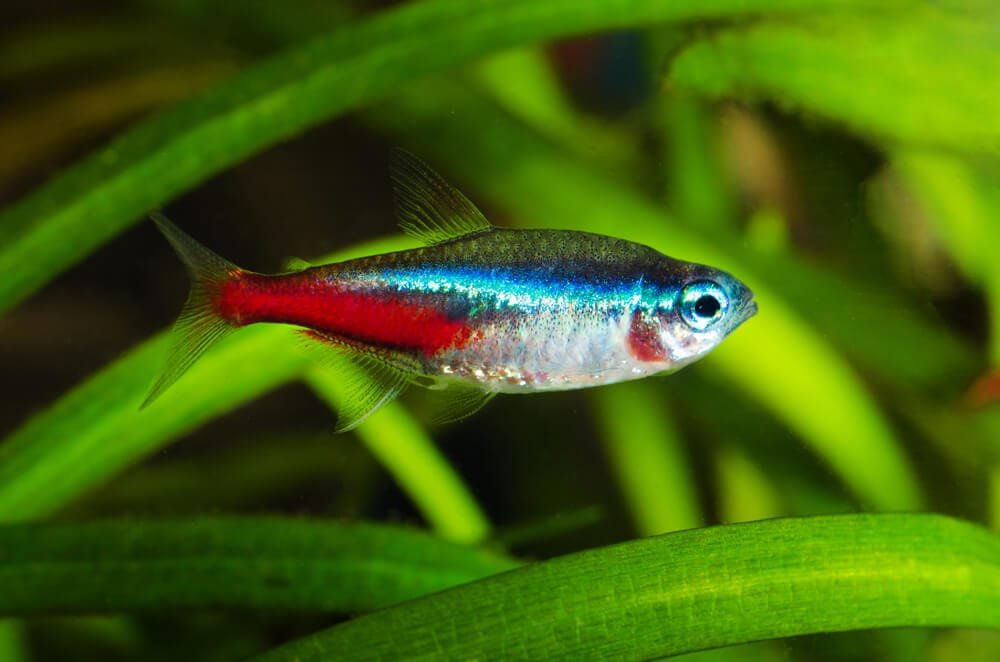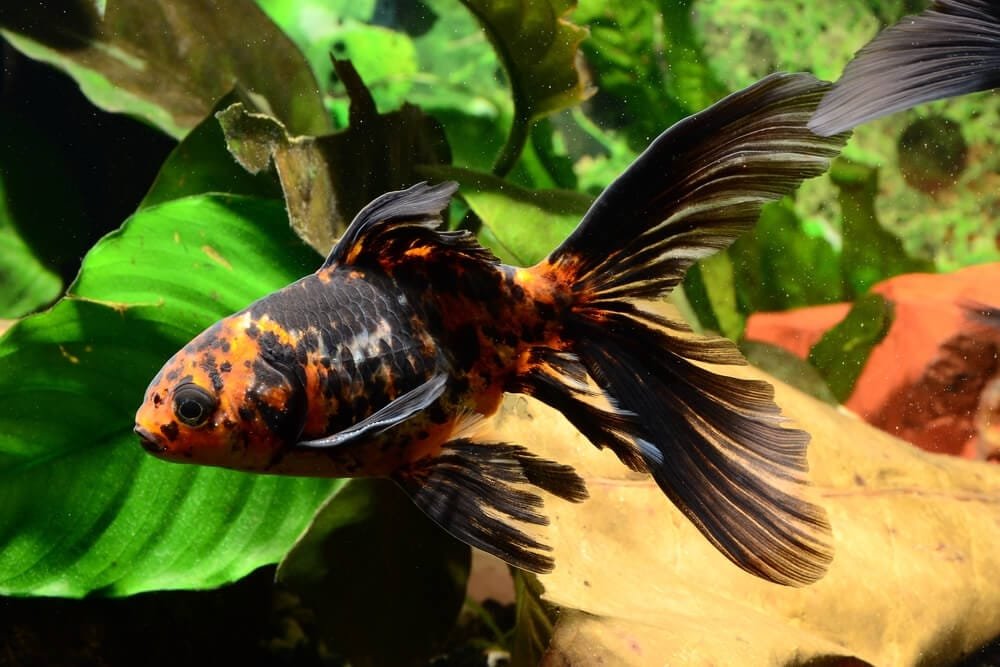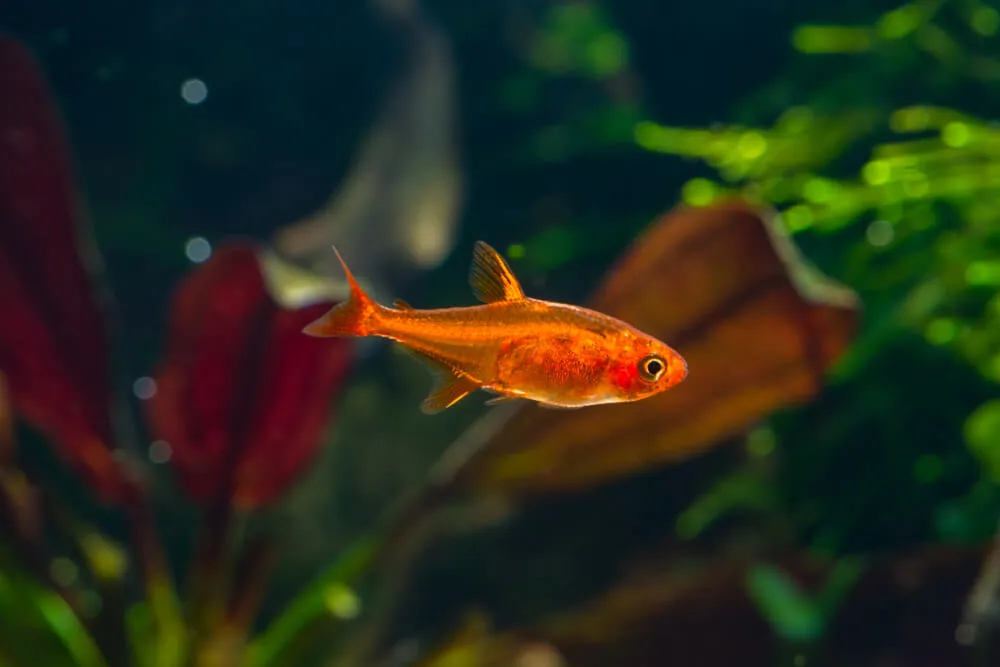Are you ready to explore the vibrant world of the Neon Tetra? With its stunning neon blue and red strips, this small tropical fish is known for its beauty and peaceful nature. Whether you’re a seasoned aquarist or just starting out, this article will provide you with all the essential information you need to care for and enjoy these captivating creatures in your own home. Prepare to be mesmerized by the Neon Tetra’s graceful movements and learn about their unique habitat requirements, diet, and compatibility with other fish. Let’s dive into the fascinating world of the Neon Tetra!
Physical Description
Size
Neon tetras are small freshwater fish that typically measure about 1.5 to 2 inches in length when fully grown. They have a slender and elongated body shape, with a slightly compressed side profile. Despite their small size, their vibrant colors make them highly noticeable in any aquarium.
Color
One of the most striking features of neon tetras is their vibrant coloration. Their body displays a dazzling blue sheen, which extends from their head all the way to their tail. A bold horizontal red stripe runs along the length of their body, creating a stunning contrast against the blue background. These vivid colors make them a popular choice amongst aquarium enthusiasts.
Shape
Neon tetras have a streamlined and slender body, which allows them to move swiftly through the water. Their body is slightly flattened on the sides, giving them a streamlined appearance. They have a forked tail fin, which aids in their agile swimming abilities. Overall, their shape perfectly complements their active and graceful nature.
Natural Habitat
Geographical Range
The neon tetra is native to the warm and heavily vegetated waters of the Amazon River basin in South America. They can be found in various countries, including Brazil, Colombia, and Peru. Within this region, they inhabit slow-moving streams, small tributaries, and flooded forest areas. The dense vegetation provides them with shelter and protection, while also offering a suitable environment for spawning.
Aquatic Environment
Neon tetras thrive in freshwater environments with specific water conditions. They prefer slightly acidic water, with a pH ranging from 6 to 7.5. The water temperature should be maintained between 72°F and 80°F. In their natural habitat, they inhabit water bodies that are surrounded by dense vegetation, so adding plants to their aquarium is essential. The presence of plants not only replicates their natural habitat but also provides hiding places and areas for them to explore.
Behavior
Schooling Behavior
Neon tetras are known for their strong schooling instinct. They feel most secure when surrounded by a group of their own kind. A school of neon tetras creates a mesmerizing display of shimmering blue and red colors as they swim together in perfect synchronization. By schooling, they can confuse predators and increase their chances of survival. It is recommended to keep a minimum of six neon tetras together to ensure their well-being and happiness.
Feeding Behavior
Neon tetras are omnivorous fish that primarily feed on small aquatic invertebrates and insects in their natural habitat. In an aquarium, they readily accept a variety of commercial fish foods. It is best to feed them a balanced diet that includes high-quality flake or pellet food specifically designed for tropical fish. Additionally, offering them occasional live or frozen foods such as brine shrimp or bloodworms can provide them with necessary nutrients.
Breeding Behavior
Breeding neon tetras in captivity can be a rewarding experience for fishkeepers. During the breeding process, the male fish will chase the female fish into clumps of plants, where the eggs will be laid and fertilized. The parents do not provide any parental care to the eggs or fry, so it is essential to remove the adult fish once the eggs have been laid. The eggs will hatch in approximately 24 to 36 hours, and the fry will become free-swimming after a few days.
Diet
Carnivorous Diet
While neon tetras are omnivorous, their diet mainly consists of small carnivorous prey in their natural habitat. In aquariums, they can be fed on a diet of high-quality flake or pellet food, specifically formulated for tropical fish. These foods typically contain a mixture of protein sources, including fish meal and shrimp. It is important to ensure that their diet also includes live or frozen foods, such as brine shrimp or bloodworms, to provide essential nutrients and variety.
Feeding Habits
Neon tetras are active feeders and display an eager response when it comes to feeding time. They have small mouths, so it is advisable to provide them with small-sized food particles that they can consume easily. Feeding them multiple small meals throughout the day is recommended, as this closely simulates their natural feeding behavior. Observing their enthusiastic feeding habits can be an enjoyable experience for any aquarium enthusiast.
Tank Setup
Tank Size
For keeping a school of neon tetras, it is essential to provide them with a spacious enough tank to accommodate their active nature and encourage natural behaviors. A minimum tank size of 10 gallons is suitable for a small school of neon tetras. However, larger tanks, such as 20 gallons or more, are often recommended to ensure ample swimming space and room for additional tankmates.
Water Conditions
Maintaining suitable water conditions is crucial for the health and well-being of neon tetras. They prefer slightly acidic water with a pH ranging from 6 to 7.5. The water temperature should be kept between 72°F and 80°F, as they are accustomed to warm tropical waters. Regular water changes, of about 20% to 30% every two weeks, will help maintain water quality and stability.
Plants and Decorations
Recreating a natural habitat is important when setting up a tank for neon tetras. The aquarium should ideally have live plants, which provide them with hiding places and contribute to the overall aesthetics. Floating plants, such as Amazon frogbit or water lettuce, help diffuse the light and provide shade for the fish. Decorations like driftwood, rocks, and caves can also be added to create additional hiding spots and mimic their natural environment.
Compatibility
Tank Mates
When choosing tankmates for neon tetras, it is important to consider their peaceful and non-aggressive nature. They are best suited to live with other small and peaceful fish species that share similar water conditions. Some suitable tank mates include other small tetra species, guppies, rasboras, and dwarf gouramis. Avoid housing them with larger or aggressive fish that may intimidate or harm them.
Aggression Levels
Neon tetras, by nature, are peaceful fish and do not display aggressive behaviors towards their tankmates or each other. However, it is essential to maintain an appropriate ratio of male and female tetras to prevent excessive chasing and stress within the school. Providing adequate hiding spots and visual barriers can help alleviate any potential aggression, resulting in a harmonious community aquarium.
Health and Disease
Common Diseases
While neon tetras are generally hardy fish, they are susceptible to certain diseases. Some common health issues include fungal infections, bacterial infections, and parasitic infestations. These diseases can be caused by poor water quality, stress, or inadequate diet. Regular observation and maintenance of water conditions can help prevent or identify diseases early on.
Signs of Illness
It is important to be vigilant and recognize signs of illness in neon tetras. Common indicators of illness include loss of appetite, lethargy, abnormal swimming behavior, changes in coloration, and visible spots or lesions on their body. Any unusual behavior or physical changes should be closely monitored and promptly addressed to prevent the spread of illness within the aquarium.
Preventive Measures
Maintaining good water quality is crucial in preventing diseases and keeping your neon tetras healthy. Regular water changes and monitoring of water parameters, such as ammonia, nitrite, and nitrate levels, are essential. A well-balanced diet, regular feeding schedule, and providing a stress-free environment also contribute to their overall health and disease prevention.
Breeding
Breeding Tank Setup
To encourage successful breeding, a separate breeding tank should be set up. The breeding tank should be equipped with fine-leaved plants, such as Java moss or spawning mops, where the female can deposit her eggs. Additionally, installing a sponge or small air-driven filter will provide gentle water flow, which mimics their natural breeding environment.
Breeding Process
The breeding process begins with the male chasing the female, leading to the deposition of eggs in clumps of plants. The eggs are adhesive and will stick to the leaves, where the male will fertilize them. Once the eggs have been laid, it is crucial to remove the adult fish from the breeding tank to prevent them from consuming the eggs or fry. The eggs will hatch in approximately 24 to 36 hours, and the fry will start swimming freely after a few days.
Care for Fry
Caring for neon tetra fry requires attention to detail and a specialized diet. The fry are extremely tiny and delicate, requiring an initial diet of infusoria or commercially available liquid fry food. As they grow, they can be gradually transitioned to baby brine shrimp and finely crushed flake food. Providing a well-maintained and adequately filtered tank, along with regular water changes, contributes to the successful growth of the fry.
Tips for Keeping Neon Tetras
Acclimation
Proper acclimation is crucial when introducing neon tetras to a new aquarium. Ensure that the water parameters in the bag or container they arrived in match the parameters of the tank they will be placed in. To acclimate them, float the closed bag or container in the tank for about 15 to 20 minutes to allow for temperature equalization. Afterwards, gently release the fish into the tank, taking care not to introduce any bag water into the tank.
Proper Diet
Maintaining a balanced diet is key to the health and longevity of neon tetras. Provide them with a varied diet that includes high-quality flake or pellet food, as well as live or frozen foods. It is important not to overfeed them, as excess food can lead to poor water quality and health issues. Feeding them small portions multiple times a day ensures they receive adequate nutrition without affecting the water parameters.
Water Parameters
Constant monitoring of water parameters is essential to ensure the well-being of neon tetras. Regularly test the water for pH, ammonia, nitrite, and nitrate levels, and maintain them within the appropriate range. Additionally, periodic water changes of about 20% to 30% every two weeks help remove accumulated toxins and maintain optimal water quality. Remember to condition any new water added to the tank with a suitable water conditioner.
Conclusion
Neon tetras are vibrant and enchanting fish that bring beauty and liveliness to any aquarium. Their stunning colors, schooling behavior, and peaceful nature make them a popular choice amongst fishkeepers. By providing them with a suitable environment, a balanced diet, and proper care, you can enjoy the lively and mesmerizing presence of neon tetras in your home aquarium for many years to come.







